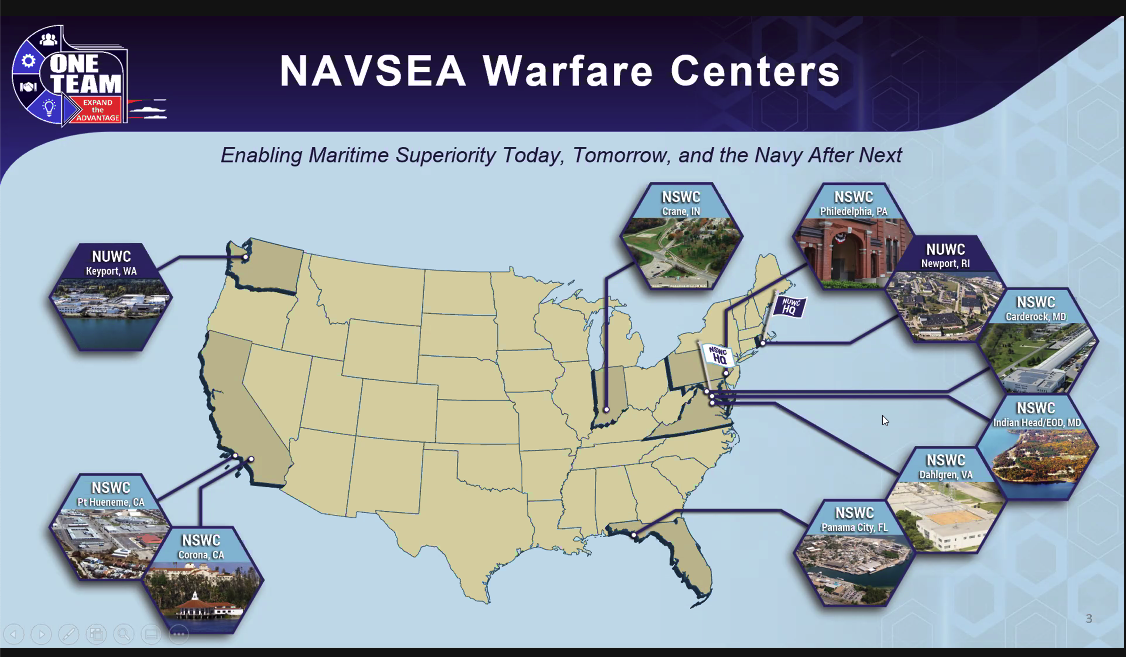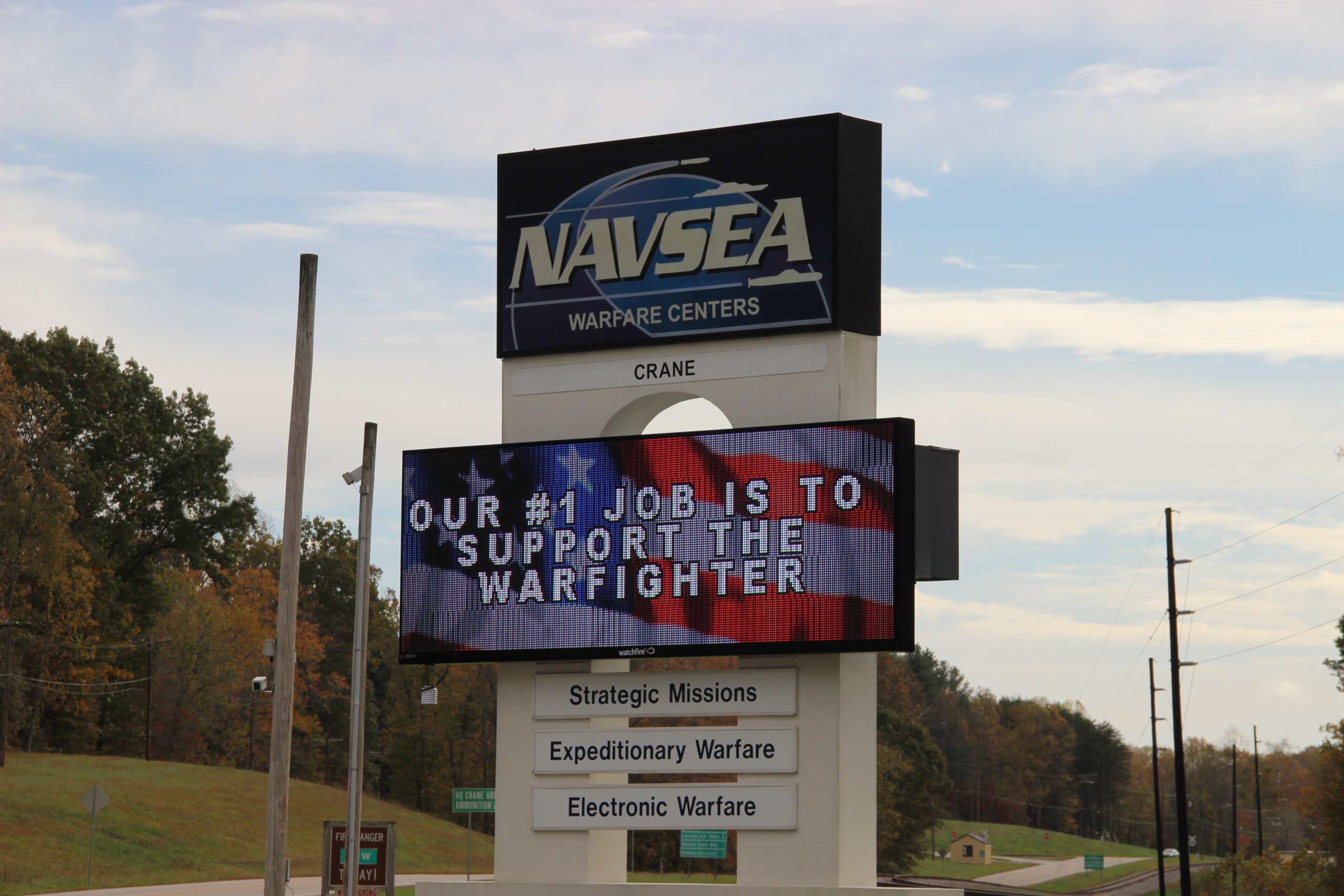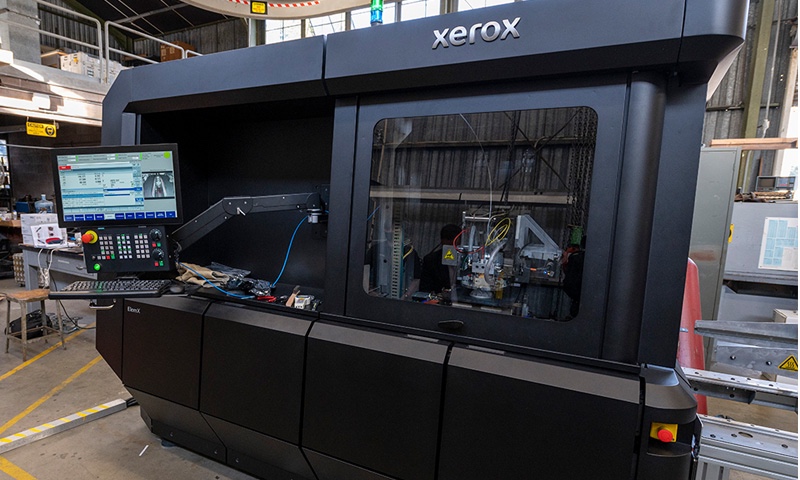The Naval Surface Warfare Center (NSWC)—one of the two main components of the Naval Sea Systems Command (NAVSEA), the other being the Naval Undersea Warfare Center (NUWC)—has awarded contracts to six vendors, including four defense contractors and two non-profit research labs, to develop additive manufacturing (AM) prototypes. In particular, the contracts are intended to fund uses of AM that optimize technology protection in their application.
NAVSEA is the largest of the U.S. Navy’s five system commands, and the NSWC’s “vision is to be the Navy’s trusted partner for identifying and providing innovative cost effective technical solutions to the warfighter.” Essentially, NSWC serves as the Navy’s main avenue for R&D regarding all seagoing vessels aside from submarines.

Given out via NSWC’s Crane, Indiana, division, the contracts altogether constitute one project currently at the focus of the Navy’s Additive Manufacturing for Technology Protection (AMTP) Consortium, begun in 2019, and sponsored by the Office of the Under Secretary of Defense for Research and Engineering’s Trusted and Assured Microelectronics programming. More specifically, the funding is part of NSWC Crane’s Strategic & Spectrum Advanced Resilient Trusted Systems (aka S2MARTS) Other Transaction (OT) authority, managed by the National Security Technology Accelerator (NSTXL) Consortium.

According to the 2016 National Defense Authorization Act (NDAA), OTs are used to “carry out prototype projects that are directly relevant to enhancing the mission effectiveness of military personnel and the supporting platforms, systems, components, or materials proposed to be acquired or developed by the Department of Defense.”
Most significantly, “Transactions pursuant to this authority…are not required to comply with federal laws and regulations that apply to procurement contracts, grants, and/or cooperative agreements”. Additionally, under the statute, each of the U.S. military’s branches has the authority to give out contracts worth up to $500 million. There are no limits on how many OTs they may give out, nor any limit to the cumulative value of the money allotted.
While the value of the awards was not revealed, the recipients are: General Electric, Johns Hopkins APL, Lockheed Martin RMS, Mercury Systems, ReLogic Research, and Charles Stark Draper Laboratories.
In a press statement responding to the awarding of the contracts, Johns Hopkins APL Senior Scientist Korine Ohiri said, “Applying [AM] techniques to technology protection will truly be a game changer. We’re looking forward to leveraging the seed funds from this award to demonstrate the powerful, complementary nature of these two areas. The stochastic nature of [AM] means we can manufacture unique designs on demand, and allows for an incredibly broad breadth of security solutions for [technology protection].”

If this all seems quite vague, that is more or less the point: the open-ended nature of the project is intended to let the technicians’ imaginations run wild, which is presumably a main reason why the contracts have been awarded under OT authority, rather than some other vehicle subject to greater nominal scrutiny. Given Ohiri’s comment, as well as the makeup of the recipients, we can probably expect that the contracts will be used to produce prototype ships whose designs are especially amenable to cryptographic protection, and/or first-run versions of software programs meant to achieve the same goals.
All in all, the present development instantly brings to mind the navy’s secret audit from last summer (news of which broke several months ago), which warned of the urgent need for heightened cybersecurity in the nation’s AM programs as the military becomes more reliant on use of the technologies involved. In the post I wrote covering that story, I suggested that one main purpose behind the audit was to yield precisely such funding opportunities as the one outlined in the present post. In sum, it appears the gravy train has left the station!
Subscribe to Our Email Newsletter
Stay up-to-date on all the latest news from the 3D printing industry and receive information and offers from third party vendors.
You May Also Like
3D Printing News Briefs, April 13, 2024: Robotics, Orthotics, & Hypersonics
In 3D Printing News Briefs today, we’re focusing first on robotics, as Carnegie Mellon University’s new Robotics Innovation Center will house several community outreach programs, and Ugogo3D is now working...
Rail Giant Alstom Saves $15M with 3D Printing Automation Software 3D Spark
3D Spark has entered into a three-year deal with the rail giant Alstom. Alstom, a transport behemoth with annual revenues of $16 billion, specializes in the manufacture of trains, trams,...
Meltio Expands Global Reach with New Partnerships in the Americas and Europe
Spanish 3D printing manufacturer Meltio has expanded its sales network across the globe. With the addition of three new partners in the United States, Brazil, Argentina, and Italy, Meltio aims...
3D Printing Webinar and Event Roundup: April 7, 2024
Webinars and events in the 3D printing industry are picking back up this week! Sea-Air-Space is coming to Maryland, and SAE International is sponsoring a 3D Systems webinar about 3D...































